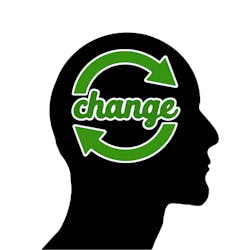At my three shops, we’re starting to look at the initial estimate as more of a sales opportunity. We’re not, in any way, shape, or form looking at that as being the estimate we’re going to work off of, but more to make the customer feel comfortable.
Whereas we used to have almost no one doing estimating in the back, now all of my locations have teams of administrative people in the back that really write the estimate. The actual estimatics is done in the back. And that’s changed drastically over a fairly short period of time.
What we’ve faced is that insurance companies are pushing more and more on the administrative side of the shop. So, we have to have stuff for that. So, where we used to have one estimator that followed a car all the way through, if there was a supplement, that estimator went back and wrote the supplement; we don’t do that anymore. Now we’re more compartmentalized, where the initial, up-front estimator may deal with a customer, but they’re not going to follow that car all the way through. We have employees behind the scenes now that follow the car.
Our estimators are now in our front office, and it’s truly more of a sales position than an estimatics position. By setting things up that way, now you can have someone that’s really strong in sales and customer service up front, and have your super technically savvy estimators behind the scene. And those estimators behind the scenes will basically never talk to a customer—they stick with the car, and with the technician—using their knowledge to make sure that we’re doing things correctly and following all the rules of what’s the right thing to do with that car.
I would actually love for us to stop writing estimates altogether. Unfortunately, we have a transition with our customers in that respect. You still have customers that want three estimates, or they want to compare what the insurance company told them to what we come up with. I think that will continue to change over time, where younger generations won’t want that because they just tend to want their car fixed.
Besides, somewhat frequently, the initial estimate that we write is largely worthless. Except for very minor repairs, until you actually take a car apart and look beyond what you can see out front, those initial estimates are just a starting point and that’s it.
Now we do more online estimates, where the customer takes pictures of their vehicle, and we get the ball rolling that way. We started pushing that really hard a few months ago. We’re having a good response with that. We’re able to push more people than ever before to get that initial estimate going, get something in their hands quickly, while realizing that we’re doing it off photos that a customer sent us. If we can get the ball rolling that way, then, when they do come in, we can allocate the correct amount of time for that vehicle.
We also schedule 100 percent of our estimates now. You’ll still get customers that pop in and say, “I just want an estimate real quick,” and on rare occasions we’ll do those for them. But we try to get them on the schedule, so we’re more in control of our day and our schedule.
We’re hoping to get to the point where, if it’s a really big hit, we can write an initial estimate, schedule the customer a time, and then maybe they can have two hours with one of our estimators. Or, if it’s something small, we can allocate 15 minutes to it, so we use our resources better.
You’ll get customers that are going to complain about us scheduling estimates, but in this business nowadays, with as technical as it is, you need dedicated time to do that process—you can’t do it like we used to 15 years ago, where you just pumped out an estimate real quick. Nowadays with estimates, you could be completely wrong if you’re not doing the rest of the work that goes behind it.
About the Author

